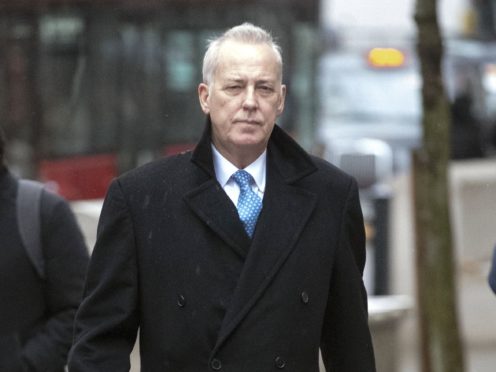Entertainer Michael Barrymore is to find out whether police have won an appeal over the level of damages he is to receive for the wrongful arrest he says destroyed his career.
The comedian and TV presenter values his claim against Essex Police at more than £2.4 million.
But the force argues that he should only get a “nominal” payout.
Court of Appeal judges are to announce their decision on Wednesday on a challenge by the police against a High Court ruling in August last year that Mr Barrymore was entitled to “more than nominal” damages.
The star launched a High Court damages action after he was arrested and detained in June 2007 on suspicion of the rape and murder of 31-year-old Stuart Lubbock, who was found in the swimming pool at his home in Roydon, Essex, six years earlier.
Mr Barrymore, who brought his legal action against the police for wrongful arrest and false imprisonment under his real name, Michael Ciaran Parker, puts his compensation claim at more than £2.4 million in lost earnings.
No decision has yet been made on the sum he will eventually receive as the litigation has centred on the preliminary issue of whether it should be nominal or substantial.
Depending on the outcome of the appeal, further hearings are expected for a judge to decide on the figure.
The force argues that if Mr Barrymore is entitled to substantial damages it would have wide-reaching implications for the police service and other organisations facing similar claims, particularly from wealthy or famous individuals.
Lord Faulks QC, for the Chief Constable of Essex Police, told Sir Brian
Leveson, Lady Justice Hallett and Sir Ernest Ryder during appeal proceedings last month that High Court judge, Mr Justice Stuart-Smith, had “erred” in his approach to the law.
Lord Faulks said that, although the focus of the appeal was on Essex Police and Mr Barrymore, “we should not lose sight of the fact that a young man died”.
He added: “His family, as well as their distress at this young man’s death, have never obtained a true explanation for it.”
Mr Barrymore and Mr Lubbock’s father, Terry, attended the hearing before the three judges.
Essex Police admitted the arrest was unlawful as the arresting officer did not have reasonable grounds to suspect Mr Barrymore was guilty of any offence.
At the High Court, the force submitted Mr Barrymore could have been lawfully arrested by another officer, meaning that only an award of nominal damages should be made, rather than the “substantial” sum sought by the star.
But Mr Justice Stuart-Smith ruled that the defendant, the Chief Constable, had failed to prove that, if not arrested unlawfully as he was, Mr Barrymore “could and would have been arrested lawfully”.
He said there was “information available to the police that could have provided an arresting officer with reasonable grounds for a lawful arrest”.
But there was only one designated arresting officer who had sufficient information and had been sufficiently briefed to enable her to arrest him lawfully, and she was not present.
Hugh Tomlinson QC, for Mr Barrymore, had told the High Court judge that Mr Barrymore was never charged with any offence and the Crown Prosecution Service (CPS) later made it “crystal clear” that there was no basis for any charges.
At the Court of Appeal, Mr Tomlinson, submitting that the appeal should be dismissed, argued that the High Court judge “should have held that the defendant had not established that any police officer had reasonable grounds for believing that it was necessary” to arrest Mr Barrymore.
Mr Tomlinson told the appeal judges that the “original incident” had a “devastating” effect on Mr Barrymore’s career.
Then there was a highly publicised inquest, he said, adding: “There is no doubt that something terrible happened to this young man.
“As to what actually happened, no-one has ever been able to find out.”
That was “very, very regrettable”, and everyone was “wholly sympathetic to his family”.
Mr Tomlinson said: “The claimant then rebuilt his career, and was rebuilding his career, and then comes this arrest, which puts him, on his case, entirely back to square one.
“He has never been able to rebuild his career since.”
Mr Lubbock’s body was found in the pool after a party where drugs and alcohol were consumed.
A post-mortem examination revealed that he had suffered serious anal injuries.
In 2002, an open verdict was recorded at the inquest into his death.
